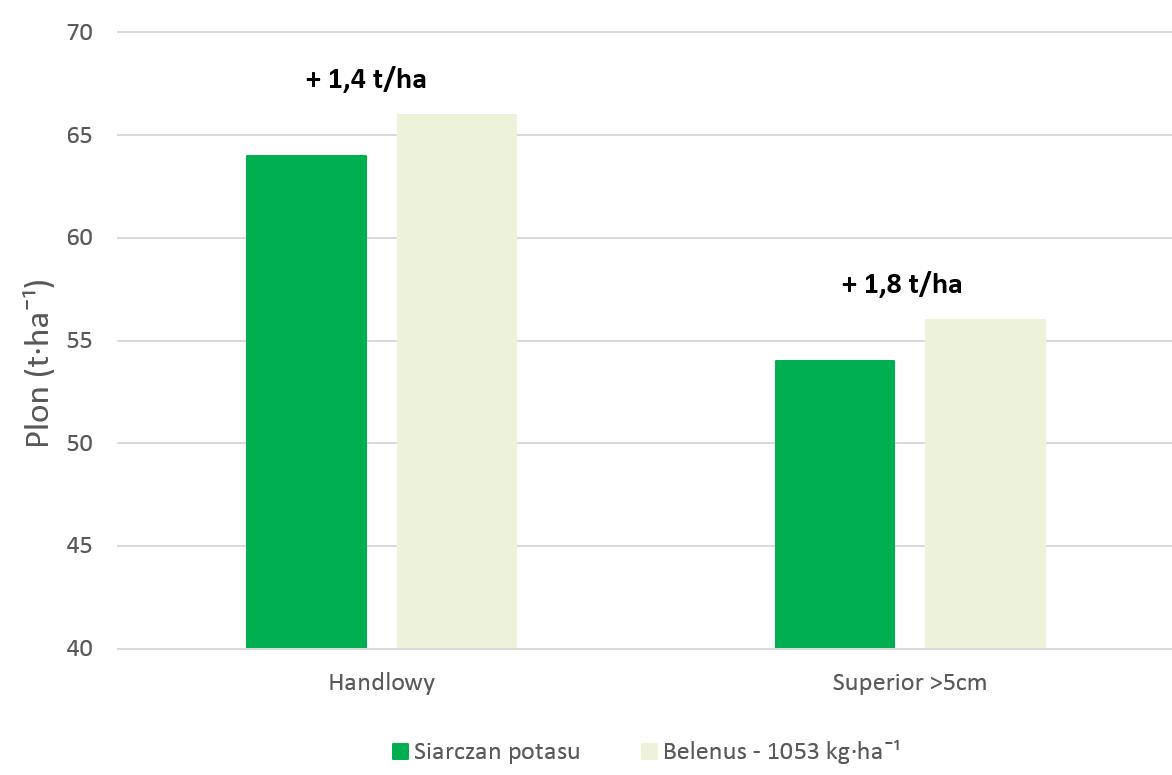Belenus®, Ecological Mineral Sulphur Fertiliser. Granulated Sulphur.
Belenus® ecological mineral fertiliser is the optimum answer to the problem of sulphur deficiency in the soil. It is a fertiliser for use on all types of soil, particularly recommended for light soils prone to eluviation. High proportion of sulphur with the addition of potassium, calcium, magnesium, and sodium comprehensively improves the plant welfare. The use of Belenus® ecological mineral fertiliser increases the crop quantity and quality by stimulating vegetative growth of plants, increasing chlorophyll content, activating enzymes and photosynthesis. At the same time, Belenus® provides a real shield to protect plants from the effects of heavy metals and xenobiotics. Belenus® ecological mineral fertiliser is particularly recommended for oilseed crops (e.g., rape, soya, flax, sunflower), as well as for maize, cereals, vegetables, and sugar beet.

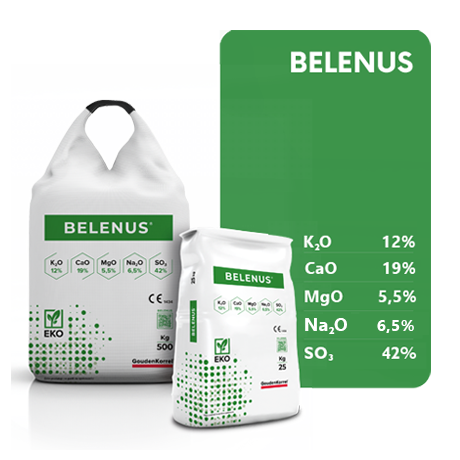
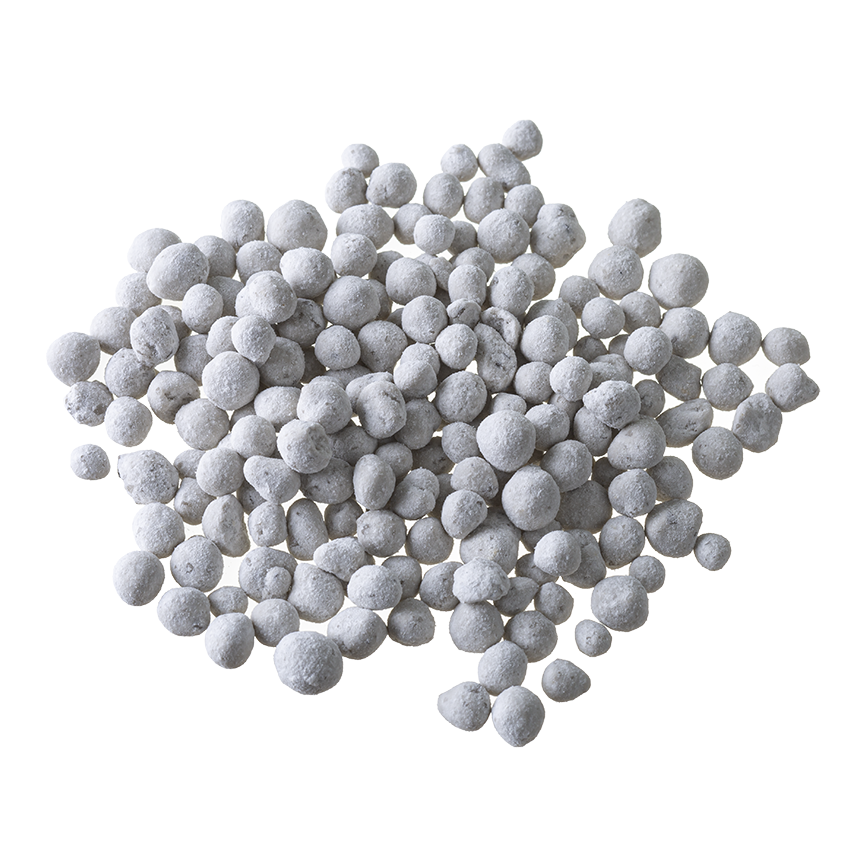
Properties of Belenus Mineral Fertiliser
BELENUS Ecological Mineral Fertiliser – Product characteristics
- MINERAL FERTILIZER (PFC 1 (C) (I) (a) (i))
K (Ca, Mg, Na, S) SIMPLE SOLID INORGANIC MACRONUTRIENT FERTILIZER 12(+19+5.5+6.5+42)
12% Potassium oxide (K2O) soluble in water
19% Total calcium oxide (CaO) 7% CaO soluble in water
5.5% Total magnesium oxide (MgO) 5% MgO soluble in water
6.5% Total sodium oxide (Na2O) 5.5% Na2O soluble in water
42% Total sulfur trioxide (SO3) 38% SO3 soluble in water
- Ingredients: CMC1: primary raw materials and mixtures: crude potassium salt CAS:15278-29-2, lime meal CAS:471-34-1
- Granulometry: 98% of the product is in the form of granules with dimensions of 2-8 mm
- pH of the substance: 7.7
- Precautions: use eye and face protection. In case of getting into the eyes, carefully rinse with water for several minutes. In case of getting into the mouth immediately contact a doctor!
- Storage: store away from sunlight, in a dry and well-ventilated room.
The role of mineral fertilizers in plant yielding
Plant yield is largely determined by proper nutrition. The sources of mineral components include the soil, as well as any mineral, natural and organic fertilisers applied. After Poland’s accession to the European Union, a progressive specialisation of farms took place, which resulted in the reduction in livestock population and reduced inflow of organic matter into the soils. The observed shortage of natural fertilisers and the cultivation of new varieties of plants with high fertiliser needs contributed to the increased importance of mineral fertilisers. In some regions of Poland, they became the main source of mineral elements for plants. In Poland, a total of 2,049,831 tonnes of mineral fertilisers are used annually, i.e. 140.2 kg·ha-1 of agricultural land. Nevertheless, in Poland, soils with low and very low content of essential elements such as phosphorus, potassium and magnesium still represent from 27% (for Mg) to about 40% (for K) of agricultural land (Statistical Yearbook of Agriculture 2018). Therefore, it is important to use mineral fertilisers with a high content of easily accessible elements contained in natural, chemically unprocessed raw materials. Belenus® is an innovative granular inorganic fertiliser that meets these important criteria for rational and ecological plant cultivation (according to EN 13535). Produced from such components as polyhalite, Belenus® is subjected to thorough quality control and processed using the innovative G2D Nodens Technology™. Opisywany tu nawóz zawiera: The Belenus® fertiliser contains 42% SO3, 12% K2O, 19% CaO, 5,5% MgO and 6,5% Na2O. All of these essential mineral elements are in a water-soluble form, and thus easily accessible to plants. Belenus®is particularly suitable for crops that prefer low chloride levels in the soil, such as tobacco and grapes, and wherever a higher dry matter content is desired – like in the case of potatoes. It does not cause soil acidification and can be mixed with other fertilisers, including nitrogen. It is designed for use directly before sowing, as well as shortly after seedling.
Sulfur in BELENUS® fertilizer
All elements contained in it are essential for the proper growth and development of plants. However, the role of sulphur requires special emphasis. Its physiological role results mainly from the presence of three amino acids in the molecule, i.e. cysteine, cystine and methionine. Sulphur in the form of sulphur residues is a component of acidic polysaccharides and some flavonoids such as persicarin. This macroelement also occurs in heterocyclic systems of vitamins, some amines (ergothioneine), alkaloids (Ernst 1998, Marska and Wróbel 2000). Sulphur-containing vitamins in the form of heterocyclic combinations include thiamine and biotin. It is also found in low-molecular organic compounds such as djenkolic acid, methyl mercaptan and garlic oils found Allium type plants. Sulphur also occurs in tripeptides, e.g. penicillin and cephalosporin – antibiotics whose precursors are cystine and cysteine (Marska and Wróbel 2000). In oxidised form, sulphur is a component of sulfolipids which are structural elements of cell membranes (Kleppinger-Sparace et al. 1990). This element is present in both oxidised and reduced form in glucosinolates. (Josefsson 1970).
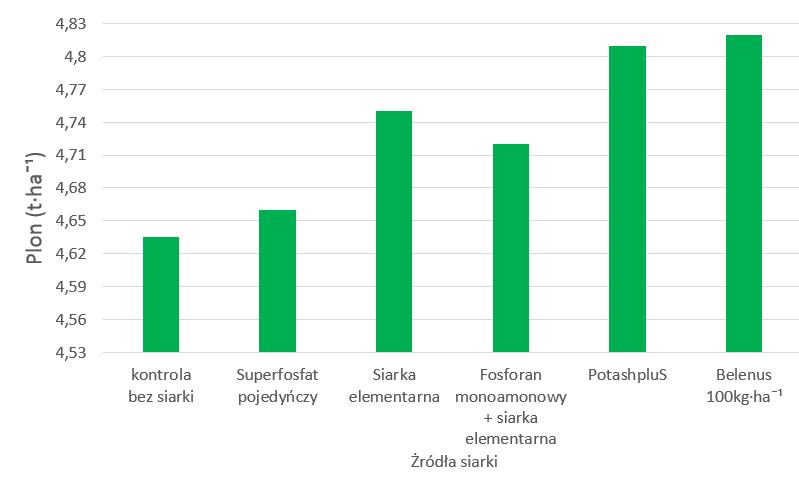
Potassium in the Belenus® mineral fertilizer
The second macroelement found in the Belenus® fertiliser is potassium, which together with calcium plays a key role in the process of water uptake by plants. K+ and Ca2+ cations regulate plant water management by controlling the transpiration process. The potassium ions cause the opening and Ca2+ the closing of the leaf stomas. According to recent studies, more than 60 different enzyme reactions are activated by the potassium ion (Stępień et al. 2009; Tripathi et al. 2014). Potassium increases the plants’ resistance to frost and diseases. It was also shown to have a beneficial effect on the postharvest life duration of plants. In the case of potatoes, a good supply of potassium improves the accumulation of starch in the tubers and reduces their susceptibility to darkening of the flesh before and after cooking. As a result, tubers of potato varieties intended for fries and chips get a better colour after frying (Grzebisz 2011; Osowski et al. 2017).
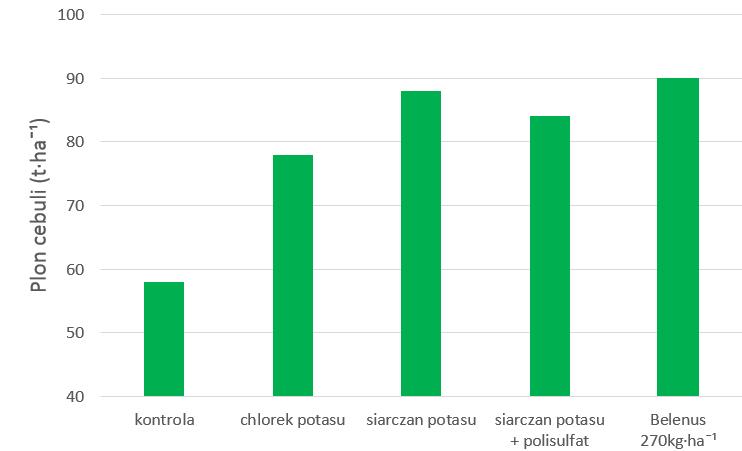

Calcium in Belenus® fertilizer
The calcium content of the Belenus® fertiliser should also be mentioned. Calcium regulates the soil reaction and is an essential element for proper plant growth and development. Plants properly nourished with calcium, which controls the process of water photolysis, remain green and photosynthetically active for longer, which results in an increased yield. Its role during the mitotic division taking place in plant meristems should also be emphasized. These processes are particularly important in the development of the root system and the formation of root hairs, which is the basis for the construction of future plant yields. With properly developed roots, plants can take up larger amounts of macroelements (N, P, K, S and Mg) and microelements (Mo, Mn, Zn, Cu, Fe, B) from the soil. Also, too low a level of Ca2+ blocks anaphasia, which inhibits plant growth. A good supply of calcium to bean (papilionaceous) plants is a necessary condition for the formation of root warts in which nitrogen fixation takes place (Kocoń 2012; Tab. 4). Calcium deficiency causes a disturbance in the growth of the maize pollen tube, and as a result, no fertilisation occurs – with the visible result being incomplete cobs. Calcium ions and other minerals are taken up by the roots together with water mainly on days when the leaf stomata are open. Calcium is taken up by plants, and after its incorporation into the central blade (calcium pectinate), it guarantees high strength of cell walls and maintains the integrity and consistency of tissues, thus indirectly contributing to increased resistance to pathogens and infections in dry conditions – e.g. acidic soil reaction resulting from abandoning soil liming may contribute to the occurrence of cabbage syphilis in rapeseed cultivation (in case of inappropriate alteration). The uptake of calcium ions (Ca2+) by plants is largely determined by genetic factors (Bousquet et al. 1981; Wójcik 1998; Marschner 2012). Monocotyledonous plants usually absorb less calcium than most dicotyledons (Loneragan et al. 1968; Loneragan and Snowball 1969; Islam et al. 1987; Wójcik 1998).
Magnesium in Belenus® fertilizer
The last extremely important macroelement contained in the Belenus granular fertiliser is magnesium, which stimulates the development of the root system. Without it, the basic plant physiological processes – such as mineral uptake and photosynthesis – are impossible. Being a component of chlorophyll, magnesium affects the regulation of plant photosynthesis processes and energy metabolism. It improves the use of nitrogen, potassium and phosphorus absorbed by the plants, improves the quality of protein and reduces nitrate content. Magnesium taken up by plants has a beneficial effect on the transportation and accumulation of phosphorus in the seeds. Moreover, its content significantly affects the condition, resistance and development of plants. It also affects fat, protein and carbohydrate synthesis and takes part in the transportation of assimilates. The lack of magnesium during the autumn crop vegetation results in the inhibited growth of roots, and consequently, the entire plant. On the other hand, magnesium deficiency in spring makes it difficult for plants to absorb and use nitrogen. Magnesium deficiency causes poor plant growth, decreased resistance to diseases, delayed plant developmental phases and a reduced yield. The plants which are most susceptible to magnesium deficiency include cabbage (rape), root crops (sugar and fodder beets, potatoes), cereals (winter and spring), corn, broad beans and many vegetables, such as tomatoes, cucumbers, lettuce, pumpkin, bell pepper and root vegetables.
- The essential macroelements contained in the Belenus® fertiliser play a significant role in ensuring plant yield, as indicated by their content in the primary and secondary yield of the most important crops (Tab. 1). The plants’ demand for sulphur is as follows:
- a) plants that require more than 50 kg S·ha-1 – rape, brassica, Liliaceae;
- b) plants whose requirements range from 20-50 kg S·ha-1 – leguminous, broad bean, sugar and fodder beet;
- c)plants with a requirement of less than 20 kg S·ha-1 – cereals, maize, grasses in the open field, potatoes (Grove 2010).
- The basis for assessing the need for fertiliser for sulphur of the cultivated plant is to determine its uptake, which is the product of the usable yield and the unit uptake (Tab. 2).
BELENUS Ecological Mineral Fertiliser – application and dosage
Depending on the needs of your crop, the fertiliser can be applied either pre-sowing (6-8 days before sowing) or post-sowing (at the latest 2 weeks before the expected start of the winter crop vegetation); mixing into the soil is recommended. For the selection of an appropriate dose, it is necessary to consider the target yield, soil type and its physical and chemical characteristics. The following dosage is indicative.
| Agricultural corps | |
|---|---|
| Plant | Dose of fertilizer (kg·ha-1) |
| Sugar beet | 150-250 |
| Hops | 250-350 |
| Peas | 150-200 |
| Buckwheat | 150 |
| Spring barley | 150 |
| Winter barley | 150 |
| Clover (green fodder) | 150-250 |
| Clover with grasses | 150 |
| Maize | 150-250 |
| Maize (green fodder) | 150-200 |
| Lucerne (green fodder) | 150-250 |
| Lucerne with grasses | 150 |
| Cereal mixtures | 150 |
| Oats | 150 |
| Spring wheat | 150-180 |
| Winter wheat | 150-180 |
| Triticale | 150 |
| Rape | 200-300 |
| Sunflower | 150-200 |
| Soya | 150-250 |
| Jerusalem artichoke | 150-200 |
| Grassland (meadow) | 150-200 |
| Potatoes | 100-150 |
| Rye | 150 |
| Vegetables | |
|---|---|
| Plant | Dose of fertilizer (kg·ha-1) |
| Broccoli | 250-300 |
| Red beet | 150 |
| Onion | 250-300 |
| Horseradish | 250-300 |
| Garlic | 250-300 |
| Dwarf beans | 150 |
| String beans | 150 |
| Green peas | 150 |
| Kale | 250-300 |
| Kohlrabi | 250-300 |
| Cauliflower | 250-300 |
| Brussels cabbage | 250-300 |
| White cabbage | 250-300 |
| Red cabbage | 250-300 |
| Savoy cabbage | 250-300 |
| Napa cabbage | 250-300 |
| Carrot | 150 |
| Bell pepper | 150 |
| Leek | 200-300 |
| Turnip | 250-300 |
| Icicle radish | 250-300 |
| Radish | 250-300 |
The method of using the Belenus mineral fertilizer on the rape example
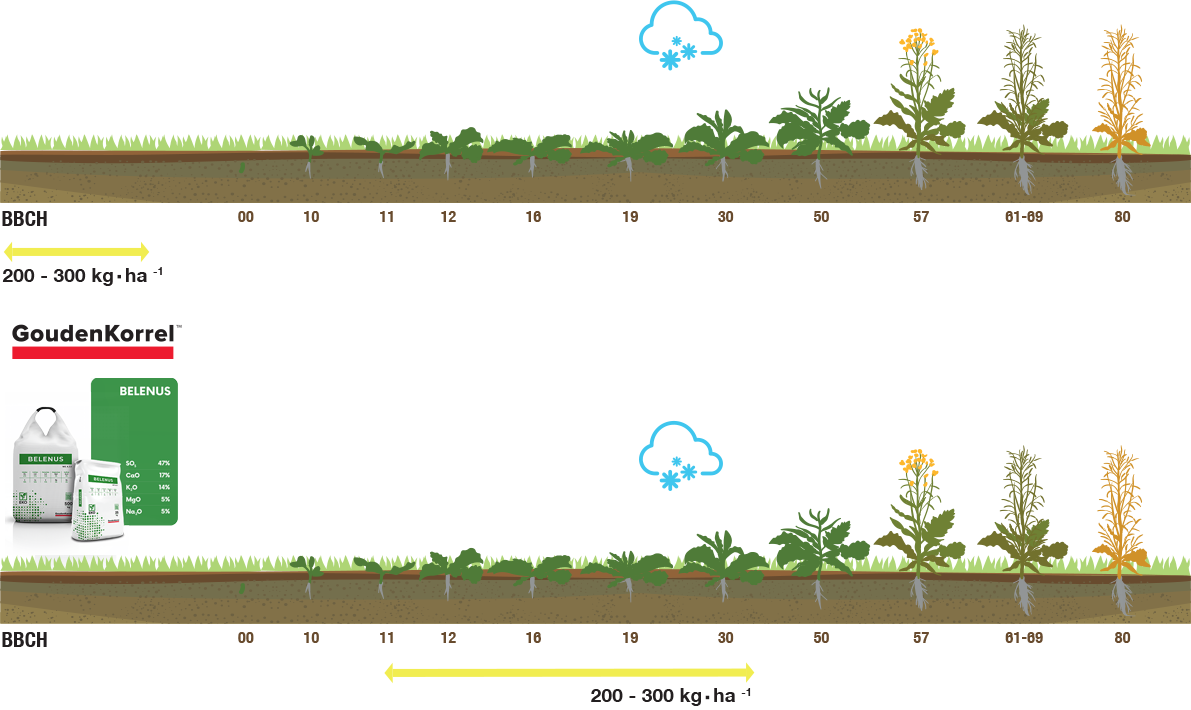
Tab.1. Average uptake of macroelements by selected crop species with the main crop with a corresponding amount of side crop (Kocoń 2012)
| Plant | Yield / ha | Macroelements in hg/ha | ||||
|---|---|---|---|---|---|---|
| N | P | K | Mg | Ca | ||
| Winter wheat – seed | 6 t | 180 | 180 | 180 | 180 | 180 |
| Spring wheat – seed | 5 t | 150 | 150 | 150 | 150 | 150 |
| Maize – seed | 6 t | 200 | 200 | 200 | 200 | 200 |
| Winter rape – seed | 3 t | 153 | 153 | 153 | 153 | 153 |
| Potato – tubers* | 30 t | 102 | 102 | 102 | 102 | 102 |
| Sugar beet – roots* | 40 t | 232 | 232 | 232 | 232 | 232 |
| Red-green clover | 40 t | 220 | 220 | 220 | 220 | 220 |
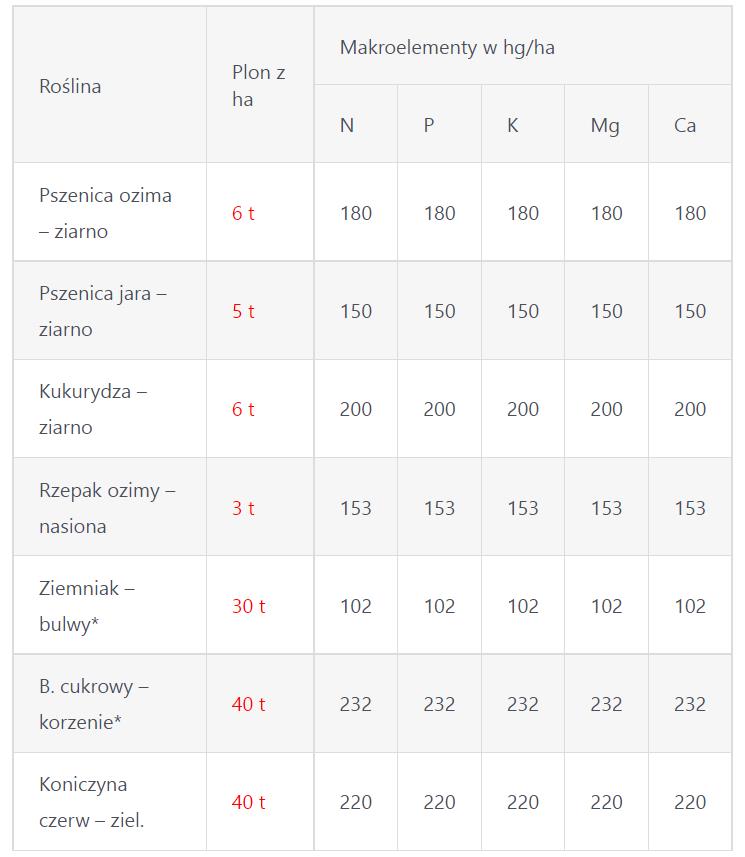
Tab. 2. Unitary sulphur uptake by selected crop species (Gaj 2010).
| Cultivated plant | Kg S·t-1 | Cultivated plant | Kg S·t-1 |
|---|---|---|---|
| Wheat | 4,50 | Maize | 5,00 |
| Rye | 4,00 | Potatoes | 0,50 |
| Barley | 3,75 | Sugar beet | 0,80 |
| Oats | 3,75 | Rape | 20,00 |
| Triticale | 4,50 | Meadow hay | 3,00 |
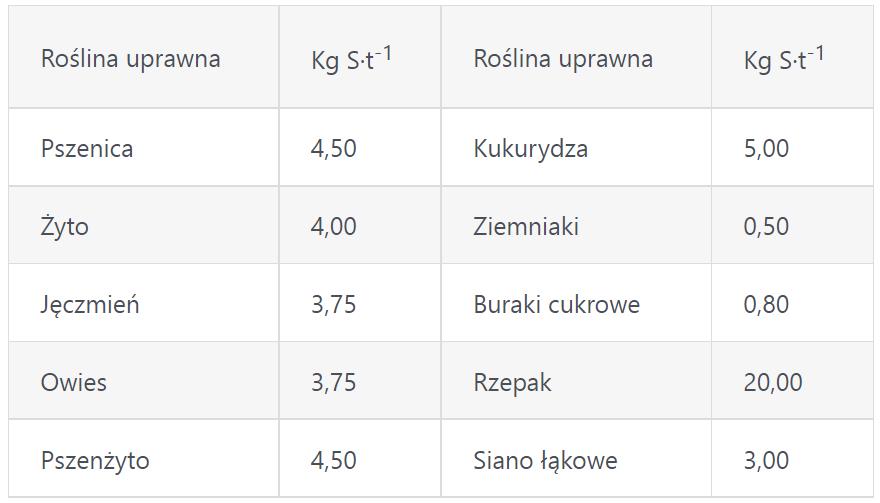
Effect of Belenus® mineral fertilizer dose on individual crops:
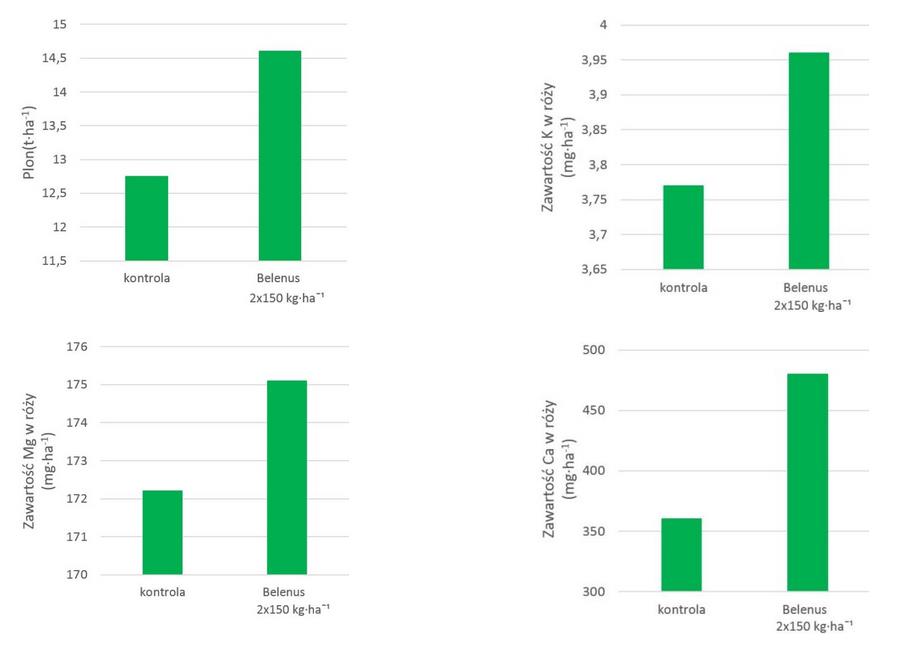
Fig. 2. Effect of Belenus fertiliser dose on winter rape (Brassica napus) seed yield, cv. Phoenix, North Yorkshire, UK, 2018

Fig. 3. The effect of Belenus fertilizer on the yield of white cabbage (Brassica oleracea), Lincolnshire, UK ,2009
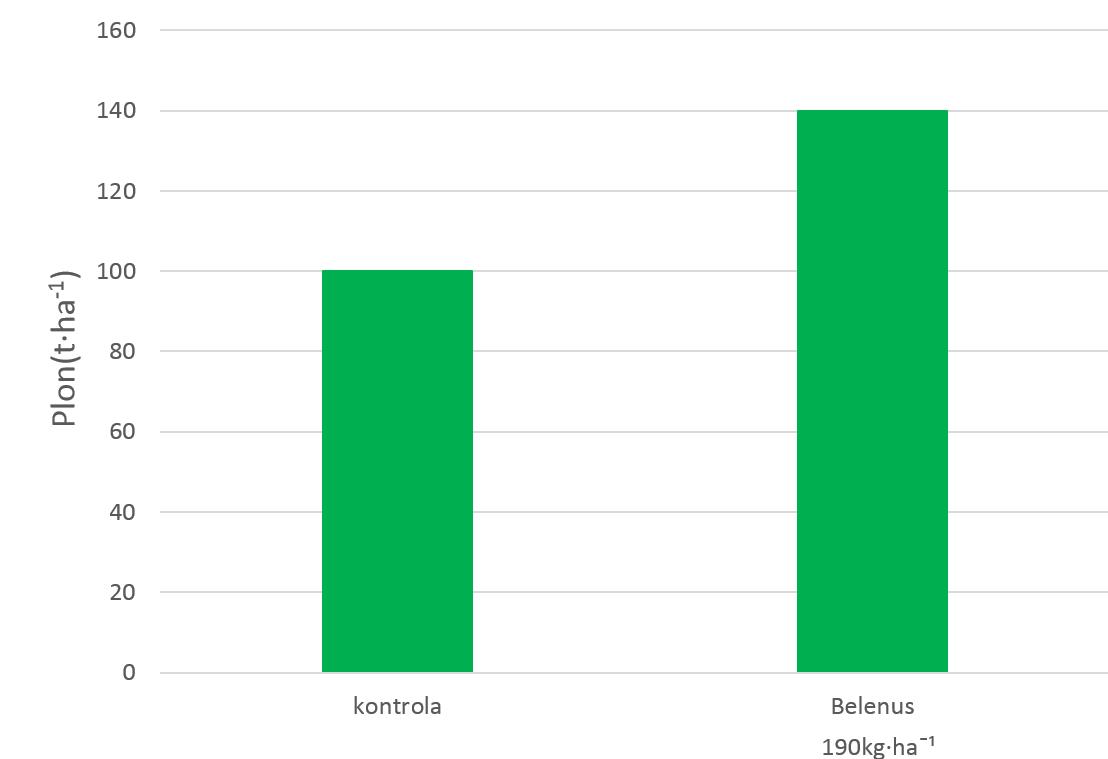
Fig. 5. Effect of Belenus fertiliser on quality characteristics and yield of broccoli (Brassica oleracea var. Italica), Kervignac, France 2016
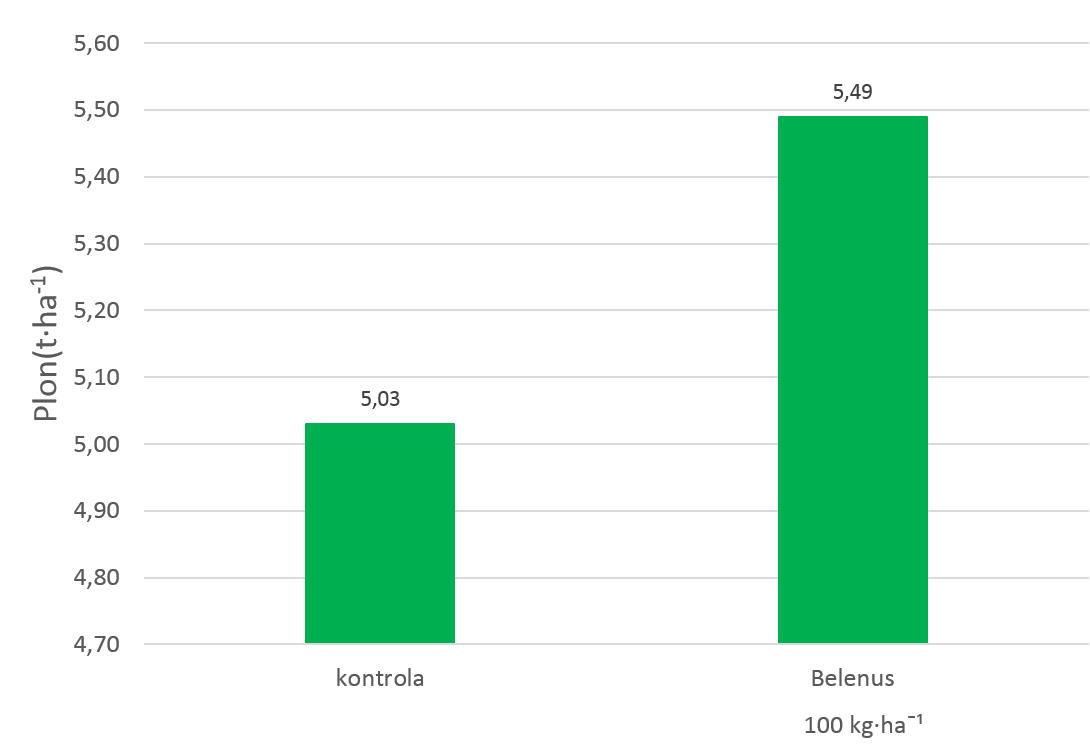
Fig. 8. Effect of Belenus fertiliser dose (750 kg·ha-1) on the yield of tomatoes (Solanum lycopersicum) cv. NO.4. Zhengfen, Henan, China 2016
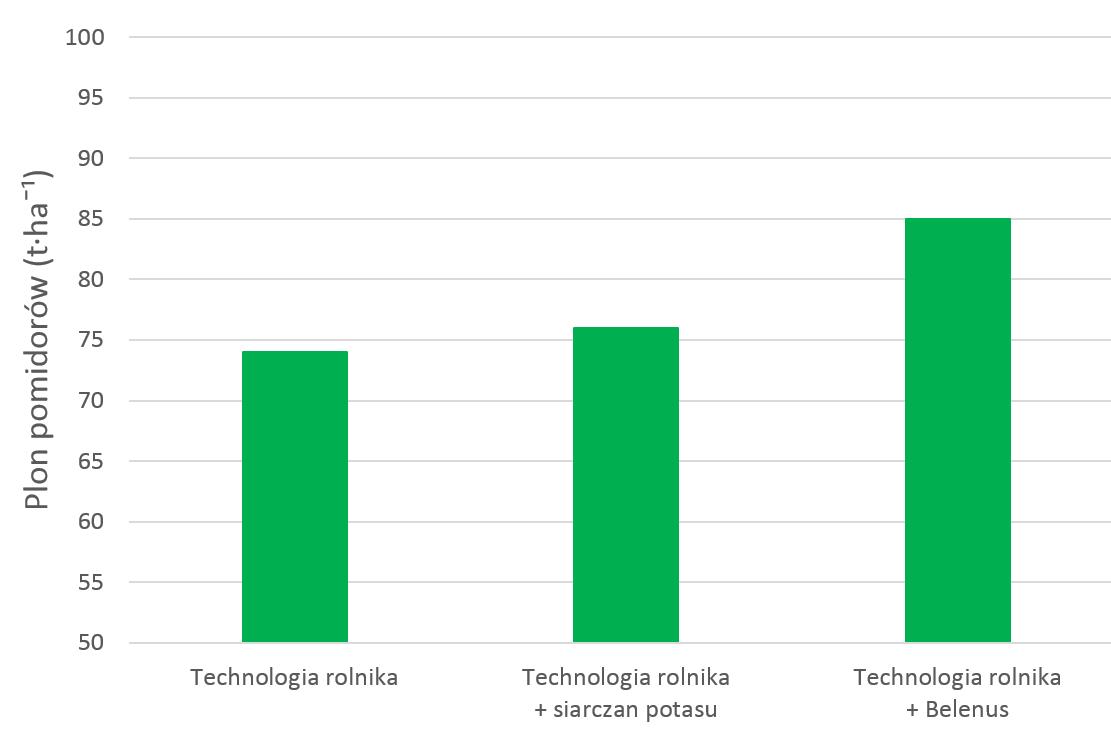
Fig. 6. Effect of Belenus fertiliser dose on the morphological characteristics of plants and yielding of napa cabbage (Brassica rapa pekinensis) (Hainan, China 2015)
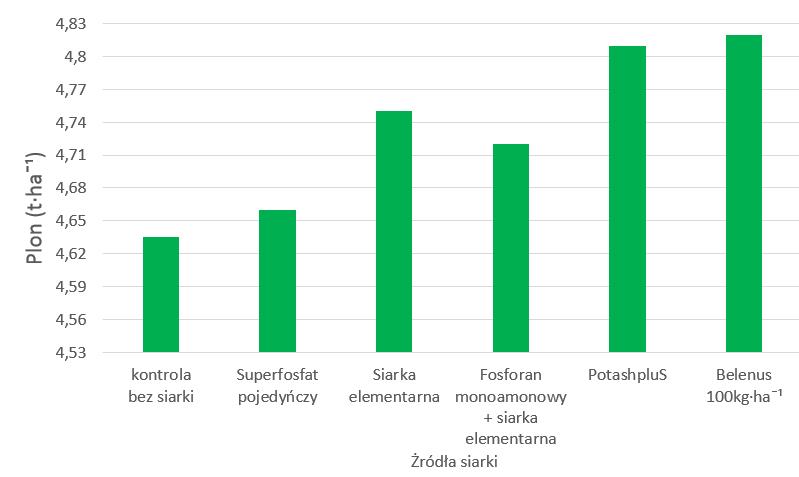
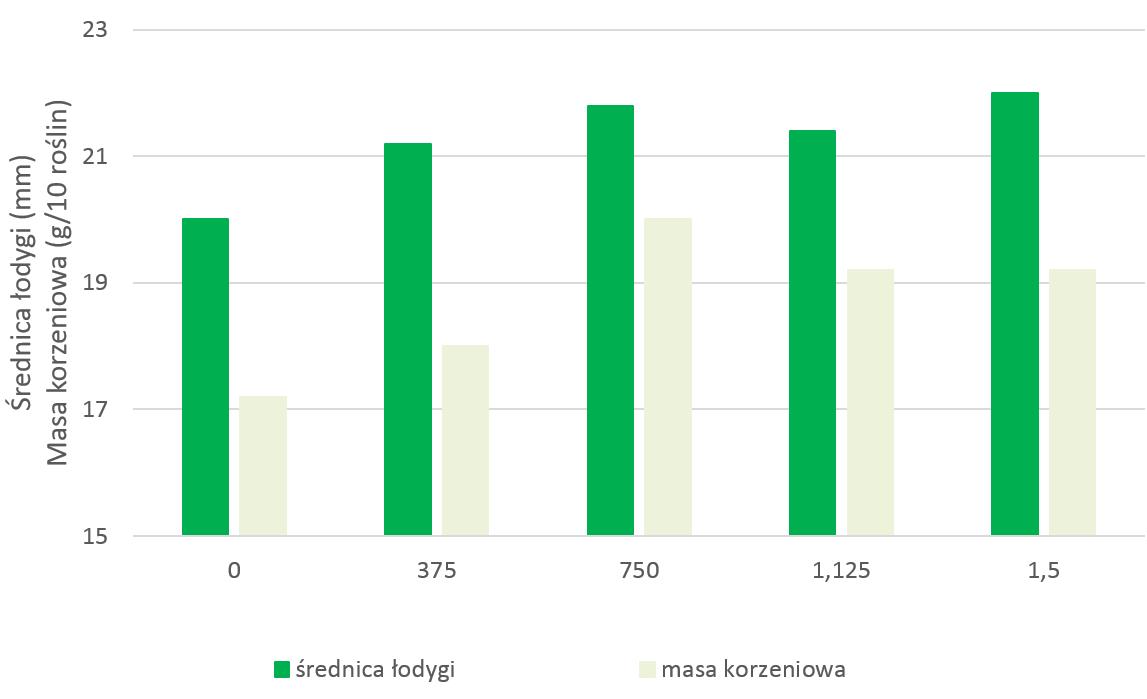
Fig. 9. Effect of Belenus fertiliser on yield of winter wheat (Triticum aestivum), UK 2018

Fig. 11. Effect of Belenus fertiliser on potato tuber yield (Solanum tuberosum), Netherlands 2016
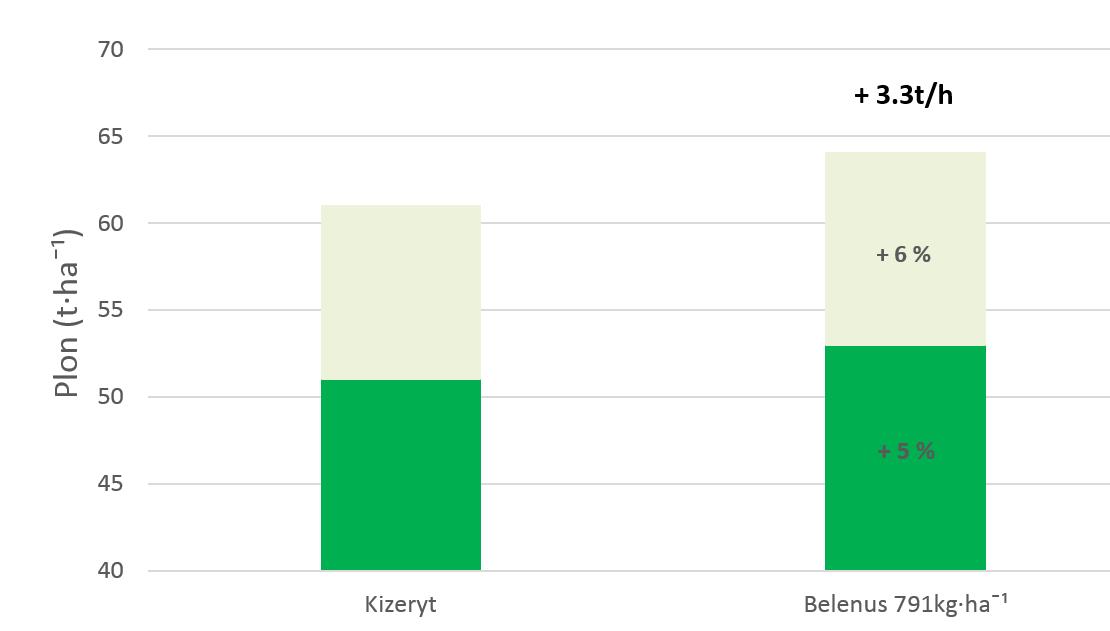
Fig. 12. Effect of Belenus fertiliser on potato tuber yield (Solanum tuberosum), Netherlands 2016
